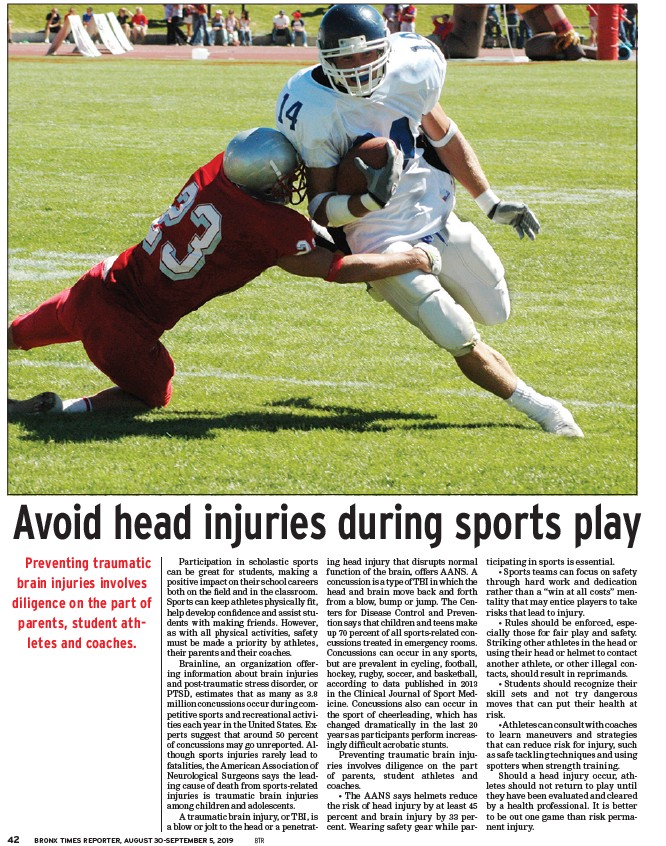
Avoid head injuries during sports play
Participation in scholastic sports
can be great for students, making a
positive impact on their school careers
both on the fi eld and in the classroom.
Sports can keep athletes physically fi t,
help develop confi dence and assist students
with making friends. However,
as with all physical activities, safety
must be made a priority by athletes,
their parents and their coaches.
Brainline, an organization offering
information about brain injuries
and post-traumatic stress disorder, or
PTSD, estimates that as many as 3.8
million concussions occur during competitive
sports and recreational activities
each year in the United States. Experts
suggest that around 50 percent
of concussions may go unreported. Although
sports injuries rarely lead to
fatalities, the American Association of
Neurological Surgeons says the leading
cause of death from sports-related
injuries is traumatic brain injuries
among children and adolescents.
A traumatic brain injury, or TBI, is
a blow or jolt to the head or a penetrating
BRONX TIMES REPORTER, AUGUST 3 42 0-SEPTEMBER 5, 2019 BTR
head injury that disrupts normal
function of the brain, offers AANS. A
concussion is a type of TBI in which the
head and brain move back and forth
from a blow, bump or jump. The Centers
for Disease Control and Prevention
says that children and teens make
up 70 percent of all sports-related concussions
treated in emergency rooms.
Concussions can occur in any sports,
but are prevalent in cycling, football,
hockey, rugby, soccer, and basketball,
according to data published in 2013
in the Clinical Journal of Sport Medicine.
Concussions also can occur in
the sport of cheerleading, which has
changed dramatically in the last 20
years as participants perform increasingly
diffi cult acrobatic stunts.
Preventing traumatic brain injuries
involves diligence on the part
of parents, student athletes and
coaches.
• The AANS says helmets reduce
the risk of head injury by at least 45
percent and brain injury by 33 percent.
Wearing safety gear while participating
in sports is essential.
• Sports teams can focus on safety
through hard work and dedication
rather than a “win at all costs” mentality
that may entice players to take
risks that lead to injury.
• Rules should be enforced, especially
those for fair play and safety.
Striking other athletes in the head or
using their head or helmet to contact
another athlete, or other illegal contacts,
should result in reprimands.
• Students should recognize their
skill sets and not try dangerous
moves that can put their health at
risk.
• Athletes can consult with coaches
to learn maneuvers and strategies
that can reduce risk for injury, such
as safe tackling techniques and using
spotters when strength training.
Should a head injury occur, athletes
should not return to play until
they have been evaluated and cleared
by a health professional. It is better
to be out one game than risk permanent
injury.
Preventing traumatic
brain injuries involves
diligence on the part of
parents, student athletes
and coaches.